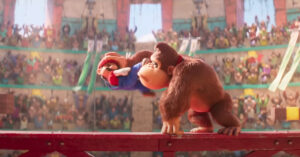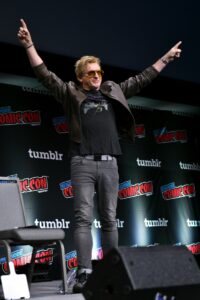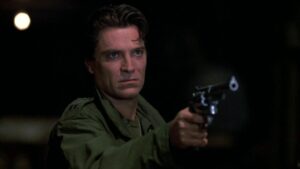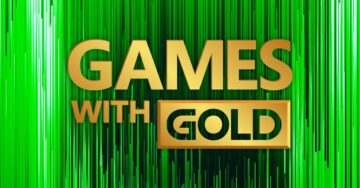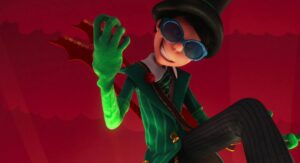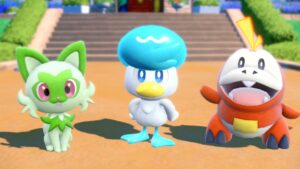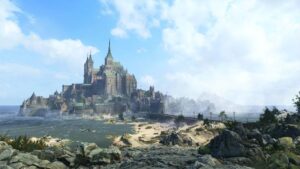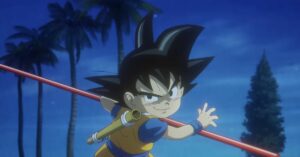Liu Kang is dead.
It’s 2002, and after a rocky transition from 2D to 3D for the Mortal Kombat franchise with Mortal Kombat 4, players booted up the newest installment, Deadly Alliance, with feverish anticipation. They were greeted with an opening scene of Liu Kang, the franchise’s hero, training at the Wu Shi Academy. The game’s narrator reveals that Quan Chi, one of the primary antagonists of MK4, has escaped from his prison. We cut back to Liu Kang fighting off a disguised Shang Tsung just as Quan Chi pulls off a sneak attack. Shang Tsung snaps Liu Kang’s neck and steals the soul from his body.
Liu Kang’s death gave Deadly Alliance a clean slate and a new narrative twist to freshen up a franchise that was beginning to grow stale. After middling reviews for Mortal Kombat 4 and unsuccessful spinoffs, it was clear that Mortal Kombat needed a change. The shocking death of the franchise hero was a rock-solid start to doing just that.
Deadly Alliance proved to be a financial hit for publisher Midway, and three years later, Mortal Kombat: Deception hit shelves with an even bigger bombshell: the Earthrealm warriors had failed in their mission to conquer the Deadly Alliance, perishing in the process. With a new foe on the horizon, the Dragon King Onaga, somebody needed to step up to save the world.
But who would take Liu Kang’s place? Deadly Alliance seemed to hint that Raiden would take the reins as the new leader for Earthrealm, but he is now a corrupted version of himself in Deception. Perhaps the iconic Mortal Kombat ninjas, Scorpion or Sub-Zero, could finally move up to series protagonists. However, what we got was a character whose audition as series protagonist was plagued by confusing gameplay mechanics, a gullible personality that earned him scorn from Mortal Kombat players, and a meek presence that left him in the shadow of the characters he was supposed to lead.
Enter Shujinko, a brand-new character in Deception, who was doomed to failure from the start.

Shujinko — the Japanese word for “protagonist” — was an older man with long, flowing white hair. Bearing a resemblance to Pai Mei from Kill Bill (a character modeled after fictionalized versions of Bak Mei from Chinese martial arts movies), Shujinko was initially introduced with an air of mystery. At the end of the Deception’s opening cinematic that shows Onaga standing tall over Shang Tsung, Quan Chi, and Raiden, Shujinko’s silhouette is seen backed by flames. He explains to the player that only he can destroy this monster that he was apparently responsible for reviving.
Despite the fanfare for Mortal Kombat’s new hero (series creator Ed Boon even dubbed him “the next-generation Liu Kang”), players could only access Shujinko through Deception’s Konquest Mode.
An open-world role-playing story mode, Konquest Mode follows Shujinko from his humble beginnings as an aspiring warrior for Earthrealm to his 46-year journey that leads him to unwittingly awaken the Dragon King. Feeling immense guilt for his actions, Shujinko looks to atone for his sins by facing Onaga alone, firmly taking the place of Liu Kang as the next Mortal Kombat hero.
Konquest Mode allows us to first navigate Shujinko as a teenager studying under mentor Bo’Rai Cho, eager to hone his skills and become a great warrior in order to enter the next Mortal Kombat tournament. But when Damashi, a ball of light/emissary for the Elder Gods, requests that Shujinko gather six artifacts named the Kamidogu, he sets aside his dreams to oblige. Konquest transitions through four timeskips, letting us control Shujinko as he grows stronger, and older, meeting with many Mortal Kombat characters along the way.
However, his time in the limelight did not last long.

Out of the gate, Shujinko was criticized for being something of a naïve fool, blindly following the instructions of not just an ominous ball of light (which would end up being Onaga), but just about every character he came across in Konquest Mode. Shujinko’s place in the Mortal Kombat lore had him popping in and out of history, inserting himself into various conflicts without having the foresight to question the motives behind the warriors he met along his journey. He only truly questions his quest a handful of times before accepting orders again.
The older Shujinko – the final playable version of the character after he is unlocked – winds up deeply ashamed of his naivety. But before we can experience Shujinko’s transformation into the wise, travelling warrior he was initially established to be, Konquest Mode ends, without redemption for our would-be hero.
Despite being the warrior who canonically defeats Onaga at the end of Deception, Shujinko had no clear narrative path forward beyond his introduction. When Armageddon — the seventh game in the series — came out about a year after Deception, Shujinko had little relevance to its story, only briefly popping up in that game’s version of Konquest Mode, now led by another new protagonist, Taven. From there, he is implied to have been killed in the famous Mortal Kombat free-for-all that was won by Shao Kahn, leading to the events of 2011’s Mortal Kombat reboot that rewrote the lore. Shujinko has only existed in the Mortal Kombat X comics since then, now serving as a corrupted underling to Havik, a cleric of chaos.

All of my criticisms so far have focused on the writing behind Shujinko, but mediocre writing can be alleviated by a character that’s fun to play. As the series transitioned past the PS2/Xbox era, newer games made a point of having each character feel unique, with distinct fighting styles and weapons. Combined with their assortment of special moves, characters were able to retain the throwback charm of their older arcade counterparts while embracing far more complex fighting mechanics.
In Shujinko’s case, he is made to stand out by being granted an ability to absorb and mimic the fighting style of any opponent he encounters, allowing players to get a feel for every character’s moveset through one body. It’s a strong setup for his character arc, endearing us to him as we witness his ability to learn the fighting styles of countless Mortal Kombat characters. But this decision came at the expense of players hardly being able to play Shujinko himself in Konquest Mode.
The execution left the impression that Shujinko was not enough to carry the majority of Konquest Mode. Even when fully unlocked, Shujinko’s fighting style was nearly identical to that of Kung Lao from Deadly Alliance, albeit with slightly altered special moves. Shujinko was a new hero but couldn’t escape the shadows of the series’ famous shaolin monks. In a game that also saw the return of beloved throwback characters like Baraka, Mileena, Nightwolf, and Ermac, Shujinko’s unremarkable gameplay made him feel inessential.
Despite his reputation I wonder if Shujinko could ever be reintroduced into the world of Mortal Kombat. The events of Mortal Kombat 11: Aftermath imply that the next mainline game in the franchise will take a path unlike any other games have traversed in the past. Can Shujinko thrive again in Mortal Kombat?
If NetherRealm Studios go with the path of Liu Kang’s ending in Aftermath, the slate will have been wiped clean not just with Shujinko, but every single character in the Mortal Kombat franchise — clearing the path for yet another lore reboot. Liu Kang creating his own history allows Shujinko to be reintroduced in a number of ways. There are endless possibilities to consider, and still hope for redemption of Mortal Kombat’s forgotten warrior.
Source: https://www.polygon.com/features/22346876/mortal-kombat-deception-shujinko-retrospective-deadly-alliance- 3d
- access
- Alliance
- Arts
- Attacks
- body
- change
- chinese
- Creating
- creator
- dead
- destroy
- DID
- Dragon
- dreams
- ends
- events
- execution
- facing
- Failure
- Finally
- financial
- First
- forgotten
- Forward
- Franchise
- fun
- game
- Games
- great
- Grow
- Hair
- history
- HTTPS
- interactive
- IT
- King
- lead
- leading
- LEARN
- Led
- light
- Long
- Majority
- man
- Mission
- move
- moves
- Movies
- order
- orders
- Other
- Personality
- player
- prison
- protagonist
- quest
- Reviews
- Role-Playing
- Series
- serving
- Shadow
- SIX
- skills
- sneak
- So
- Soul
- start
- time
- tournament
- Training
- Transformation
- twist
- us
- WHO
- world
- writing
- wu
- X
- year
- years

